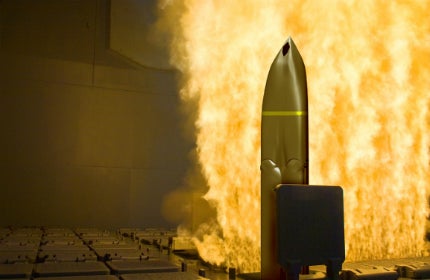
Lockheed Martin has carried out a series of captive carry flight tests of the long-range anti-ship missile (LRASM) at the Point Mugu Sea Range in California, US.
Conducted on a US Air Force’s (USAF) B-1B bomber aircraft, the test flights move the missile, which is currently being developed to address both the US navy and air force requirements, towards its first release and free flight testing in late 2013.
The test flight was primarily aimed at collection of telemetry for post-flight analysis, proper control room telemetry displays verification, and simulation of all the test activities that will occur in upcoming air-launched flight tests.
Lockheed Martin Missiles and Fire Control LRASM air launch programme manager Mike Fleming said telemetry data collection during flight in the B-1B bomb bay significantly lowers risk ahead of the first launch.
”Initial assessments indicate the missile performed as expected,” Fleming said.
See Also:
Utilising the successful joint air-to-surface standoff missile extended range (JASSM-ER) airframe, LRASM is an autonomous, precision-guided missile designed to defeat strike sea-based targets in a robust anti-access/area-denial threat environment.
How well do you really know your competitors?
Access the most comprehensive Company Profiles on the market, powered by GlobalData. Save hours of research. Gain competitive edge.

Thank you!
Your download email will arrive shortly
Not ready to buy yet? Download a free sample
We are confident about the unique quality of our Company Profiles. However, we want you to make the most beneficial decision for your business, so we offer a free sample that you can download by submitting the below form
By GlobalDataCapable of cruising autonomously, day-or-night in all weather conditions, the missile features a combat proven 1,000lb penetrator and blast-fragmentation warhead, mode sensor, weapon data link, as well as an enhanced digital anti-jam GPS and multimodal radio-frequency sensor suite to detect and destroy specific targets.
Manufactured by Lockheed in collaboration with the US Defense Advanced Research Projects Agency (DARPA) and the US Office of Naval Research (ONR), the missile is expected to be equipped with advanced countermeasures to effectively evade hostile active defence systems.
The LRASM missile is expected to enter into serial production in 2015.
Image: An impression of the vertical launch of the long-range anti-ship missile. Photo: file image.






